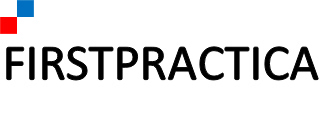Complete overview of the Episerver WCM and CMS platform for customers, analysts and investors: covers history, product-market fit, tech stack, pricing and ecosystem.
September 2018
Overview
The web content management market features multiple players, from open source platforms with wide adoption like WordPress, Drupal, Joomla, to companies targeting mid-market corporate clients and enterprises with specialized and proprietary offerings. Episerver provides an integrated content management system and e-commerce platform which are seamlessly integrated, and sold to mostly corporate clients as a turnkey solution.
History
Episerver started in Europe in the mid-2000’s and developed regional presence quickly there. A few years ago it acquired a CMS player with an installed base in the US market, Ektron, which gave Episerver an immediate footprint of adoption in America. Over time, Ektron customers moved over to the Episerver product line.
As of 2018, Episerver has approximately 9,000 customers, with a sizable percentage of these still running on-premise. New installations are primarily cloud-based. The company’s 700 employees are located in Hanoi, Stockholm and the US, for the most part.
The Episerver platform
At its core, a content management system organizes and serves text and media assets. Most CMS products allow the creation, styling, storing and collaboration between admin users to work together.
The Episerver platform contains three main components:
- The core WCM, content management system. The product is responsive across devices and can also be administered through an admin user’s iPad, for example.
- The e-commerce system, which can display a product catalog and allows customers to place orders directly in Episerver. The company highlights the fact that customers like the seamless transition between CMS pages and the web store, unlike other CMS platforms which look very different to the user, when transitioning into the online store.
- The Marketing functions, which include core modules like recommendations. This is particularly useful for e-commerce, and helps recommend related products and content to users, to keep them engage and raise revenues. This can mean more pages per session, more average revenue per users, and other such metrics.
Technology stack
Episerver is built on Microsoft .Net, and distributed as proprietary software. It tends to provide most components of the solution on its own, which is one key difference with other content management systems like WordPress, Drupal and Joomla. In the latter, the core system is open source, with many contributors, and many of the core features come as plugins or extensions, developed and supported by third party developers. On one hand, this allows companies like Automattic, the commercial arm of WordPress, to innovate very fast and scale to massive use cases with little in-house R&D. But for an enterprise customer, this can also bring questions: what if the plugin gets hacked? Who supports these extensions? So having a proprietary stack that is sold by Episerver makes it relevant to customers who have these types of concerns.
Episerver also develops and maintains connectors and APIs to Microsoft Dynamics CRM, to Salesforce, and to Marketo. It will be interesting how the Marketo relationship evolves, as Adobe just acquired it and has a CMS of its own. Perhaps Episerver and Marketo can find even more areas of collaboration in the field of marketing, which would benefit customers.
Most of Episerver’s installed base remains on premise, as new customers deploy to the cloud for the most part.
Pricing
We discussed with the team at Episerver, and mid-market CMS solutions are priced a level up from open source alternatives. Now, one thing to realize is that Episerver’s pricing includes the product, plus the managed hosting service, and support. If you compare this to a WordPress or open source WCM software, you would need to add the cost of hosting on a fully managed host (now raw infrastructure, obviously cheaper), plus the extensions you may need, and the total cost of technical support, including these extensions. Apple to apple, pricing may not look so high for Episerver, which starts around $70K USD per year.
Use cases and Ecosystem
The use case for a product like Eipserver is clearly aimed at corporate customers. Small businesses and freelancers would likely use an open source system, given Episerver’s starting price, while those with a higher budget could select it. In particular, these use cases can make Episerver an excellent fit:
- Customers looking for a proprietary, integrated CMS with full support from the vendor.
- Customers looking for a seamless solution blending content pages and an e-commerce online shopping experience.
- Customers looking for advanced marketing placements on their website, in the context of e-commerce.
- Customers looking for a CMS that integrates seamlessly with Microsoft Dynamics CRM, and secondarily with Salesforce or Marketo.
This bring us to the ecosystem part of the analysis. Since the product is built on Microsoft .net, the company has an active partnership with Microsoft, and runs most of its current cloud deployments on the Azure cloud. So, a customer looking to run an enterprise CMS in the cloud could find Episerver ideal, since the programming language is Microsoft centric, the tool integrates with Microsoft’s CRM systems, and runs on Azure. What else can one ask for?
Episerver also partners with many systems integrators, given the fact that both cloud and legacy on-premise deployments require some installation, configuration and customization.
Episerver popularity by region
The above chart shows the interest level for Episerver measured in search volume. While this does not directly correlate to revenue or adoption, it gives a directional data point on key regions and customer interest for the CMS.

Leave a Reply